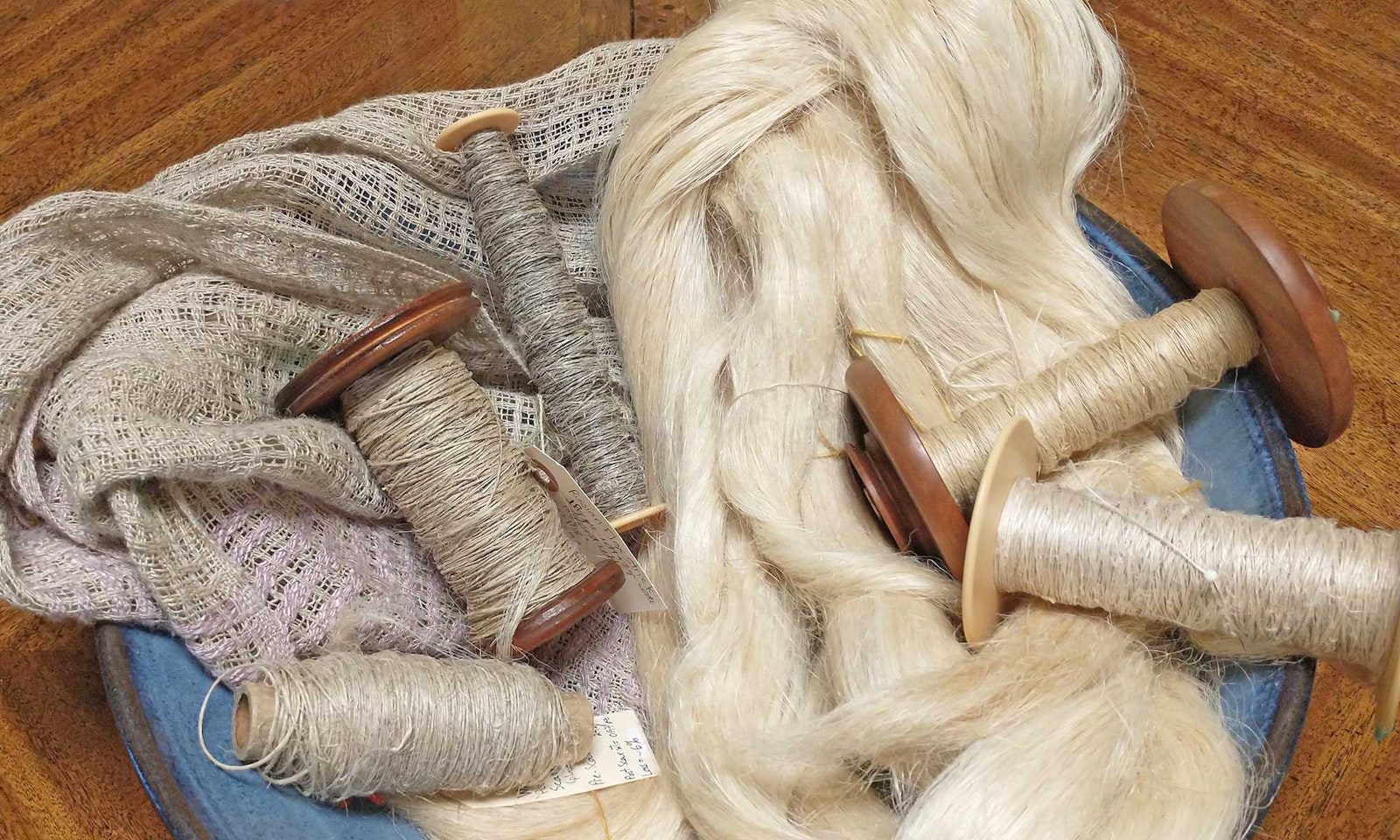Slender flax plants, with their delicate flowers and rotund seed bolls, hold a remarkable secret within their grass-green stalks. It is here the flax fibers lurk: long, strong, lustrous, and versatile fibers that lend themselves to the rigors of industry, the fancy of fashion, and the underpinnings of economies. To unleash the riches lying in wait within the straw, humankind had to learn to persuade the surrounding plant tissues to release their grip on their precious fibers. And, in some traditions, once flax fibers enter the twist during spinning, they become linen.
The Magic of Microbiology
The process used to free flax fiber bundles from the rest of the plant is called retting. Retting uses bacterial action and water to rot away the plant constituents that surround and support the long bast fibers. The two types of retting available to small-plot crafters like me are dew retting and water retting. The trick with this controlled rotting process is to know when the rett is finished. Too long and you end up with a disappointing disintegration of the fibers themselves, leaving them unable to withstand the next stages of hackling, spinning, and weaving. Too quick and your stricks are full of “boon” (the equivalent of vegetable matter) that refuses to dislodge without snapping the fibers or stabbing the spinner. When you hit the sweet spot, though, the result is a glistening and exceptionally strong fiber with a staple length of up to two feet or even longer.
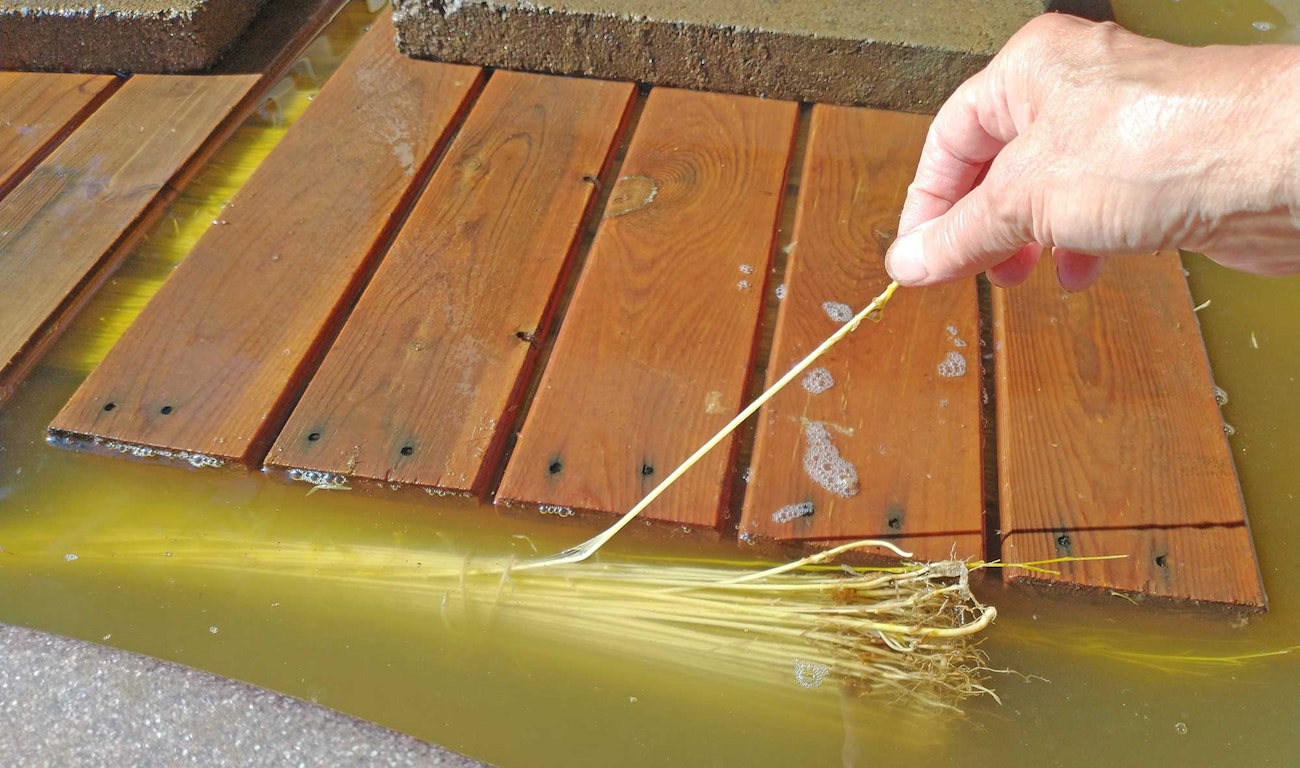 When the stems of the flax plant are retted (rotted), long fibers reveal themselves.
When the stems of the flax plant are retted (rotted), long fibers reveal themselves.
The physical conditions at each phase of the flax-to-linen process, especially the retting phase, contribute to distinctive colorways. Minerals, water characteristics, microbial populations, and time all inform the final character of linen yarn.
Dew Retting
Dew retting is low tech, and it’s the way I retted my own harvest for the first two years. Pulled flax stalks are laid out in a field and nature takes over to break down the connective tissues, much as it does in breaking down leaves over winter. Here in the Pacific Northwest, the ideal conditions for dew retting occur in spring and fall, when days are warm and overnight dew is heavy. Under these conditions the rett takes about three weeks to complete. For even retting, it’s important to flip the stalks end-over-end a few times during the rett.
Dew retting is a gentle, oxygen-rich (aerobic) process, and the resulting fibers range in color from silvery to taupe, and sometimes even black. (See the first image above.)
Water Retting
Historically in Europe, water retting was done in slow-moving streams and, as in dew retting, it relies on bacterial action. During the active phase the water quickly becomes depleted of oxygen and the pH plunges into acidic territory. Although the by-products of water retting are not inherently toxic, streams can become a hostile environment for living creatures. When stream retting is scaled up to suit industry, it causes substantial environmental impacts. And because water retting is anaerobic (without oxygen), it stinks! Think poorly tended compost. Or worse. Done on a home scale, it’s not a big deal; done on an industrial scale, the neighbors revolt!
Water retting at high temperatures is aggressive and fast, yielding lustrous golden-hued fibers. Today the industry standard is dew retting with the associated taupe colorways.
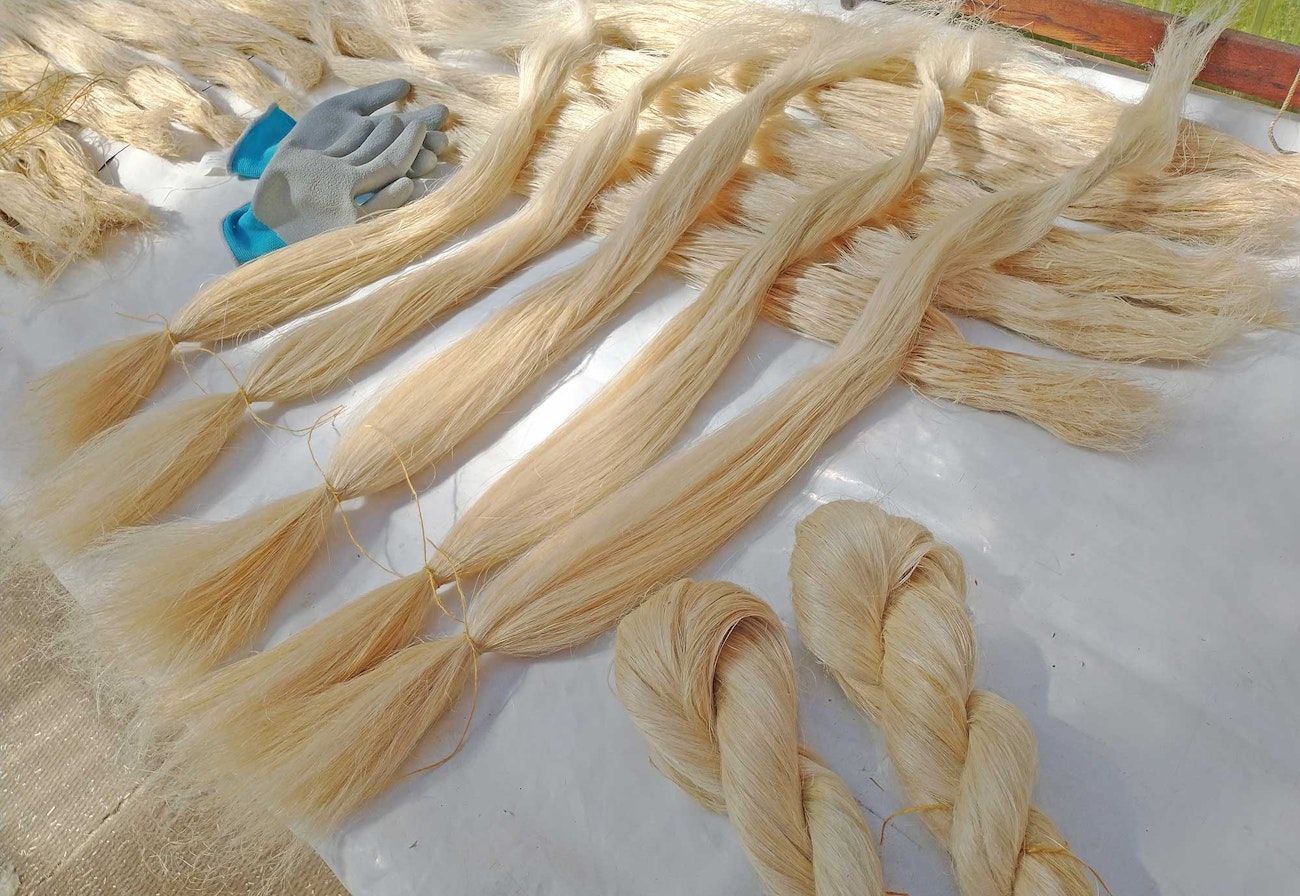 Water retting produces silky, golden-colored flax fibers.
Water retting produces silky, golden-colored flax fibers.
Karla’s Tank Method
When offered a hot tub some years ago, my husband, Jim, and I looked at each other and thought, “Aha! A retting tank.” After hand-pulling the flax stalks, we tie them into loose beets (large handfuls) with roots aligned, and lay them in the tank. We are careful to keep them straight because, believe me, you don’t want to work with curvy, tangle-prone stalks. Twice each day, for three-and-a-half days, we replace 10% of the murky water with fresh, thus mimicking the action of a slow-moving stream. At a temperature of 95°F (35°C), our process is much like incubating yogurt or making sourdough bread—it’s just another form of good old bacterial transformation! The smell is high but transient.
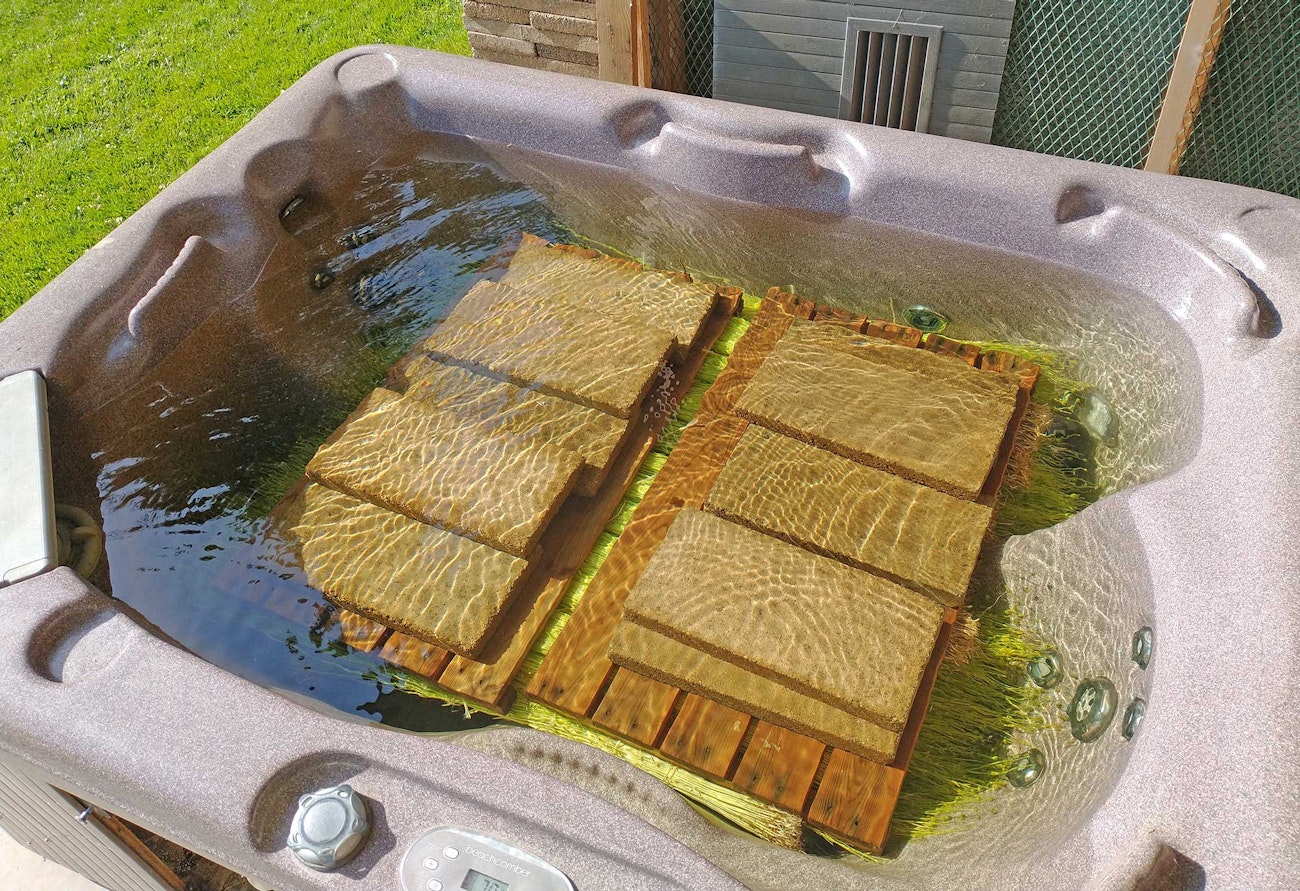 Flax beets are weighted so they stay submerged in the bottom of the hot tub. The water doesn’t stay clear and clean for long!
Flax beets are weighted so they stay submerged in the bottom of the hot tub. The water doesn’t stay clear and clean for long!
We test the batch toward completion, looking for well-retted stalks that snap when bent and fibers that slip away from the core. When the rett is over we drain the tank onto a grassy field, then refill twice with fresh water to wash the stalks. We untie and spread out the beets on the field to dry, and in a matter of hours, the fibers start to pull taught, looking rather like a fiddle bow.
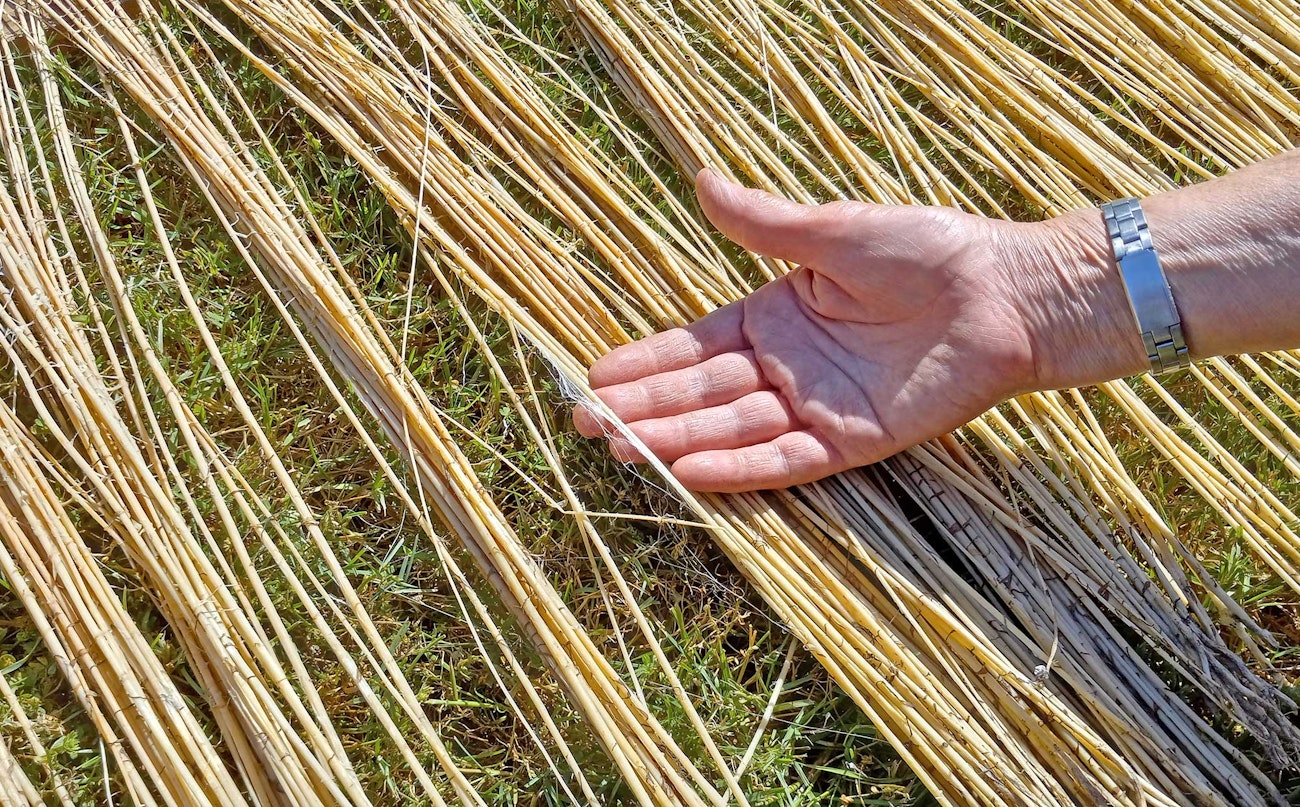 Well-retted flax fibers spring away from the stalk while drying in the field.
Well-retted flax fibers spring away from the stalk while drying in the field.
Finally, we gather and tie it all up again to wait until we break, scutch, hackle, and braid the final stricks. It’s a labor of love, really. I mean, who could afford to pay anyone for the effort and resources needed to produce handcrafted linen? When ethically done, though, it’s worth every penny.
 Karla spins flax with an S-twist and prefers to weave with singles. She aims for fine, smooth, strong, glossy, and uniform yarn, and she continues to improve with practice.
Karla spins flax with an S-twist and prefers to weave with singles. She aims for fine, smooth, strong, glossy, and uniform yarn, and she continues to improve with practice.
Resources
- Fibrevolution, fibre-evolution.com.
- North American Linen Association, northamericanlinen.org.
To learn more about flax and using it in your spinning, read Dr. Annamarie Hatcher’s article, “Plant-Based Spinning: Back to the Basics,” in the Winter 2024 issue of Spin Off.
Karla Sandwith’s knowledge of plant science and her deep appreciation of the crafts of handspinning and weaving have led her on a fascinating fiber journey. She is especially captivated by the ancient human endeavor of growing flax, extracting the fibers, and turning them into linen cloth. Or, as the fairy tales would have us believe, turning straw into gold. She believes the biological processes involved are magical, the technical details are intricate, and the influence on humanity is epic.
The historical socio-economic importance of flax is undeniable, but is it relevant and affordable in our contemporary world? This is a question worth considering, and one that Karla stays awake pondering.

